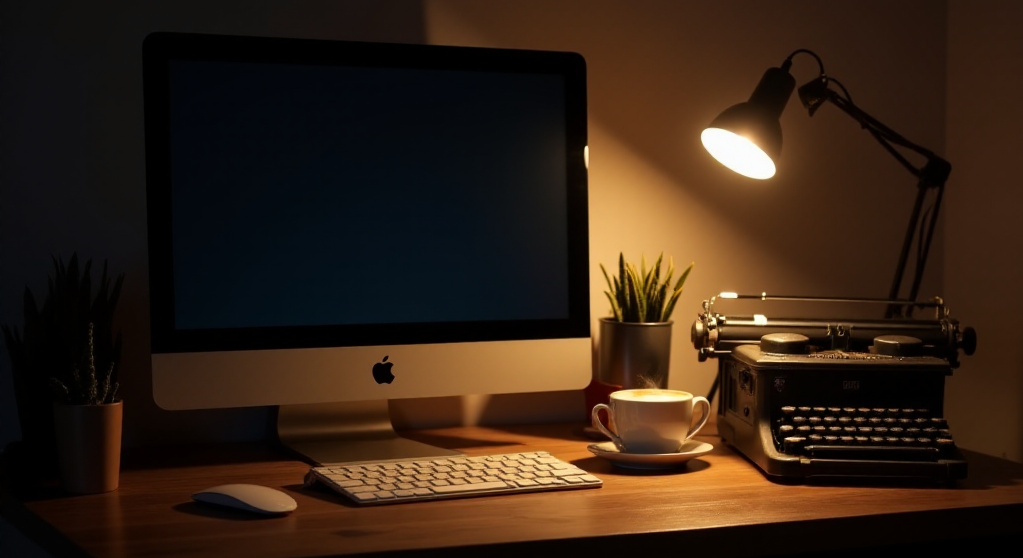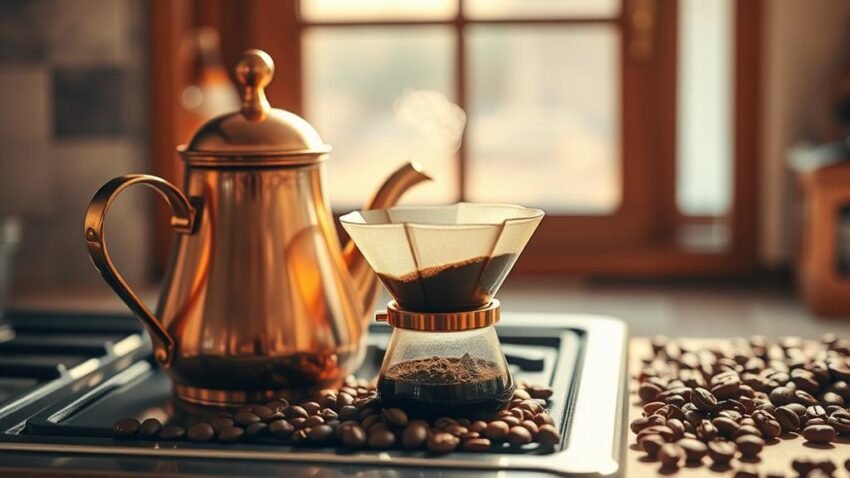To make a great cup of coffee in a kettle, I start by boiling water in an electric kettle, which is energy-saving and safe with automatic shut-off. I then use a gooseneck kettle to pour the hot water over medium-coarse ground coffee in a pour-over cone. The key is to control the pouring rate and water temperature, aiming for between 195-205°F, to ensure even saturation and peak extraction. By paying attention to the coffee-to-water ratio and using filtered water, I can achieve a balanced and rich cup of coffee. With the right techniques and equipment, I can refine my brewing skills.
Benefits of Using an Electric Kettle
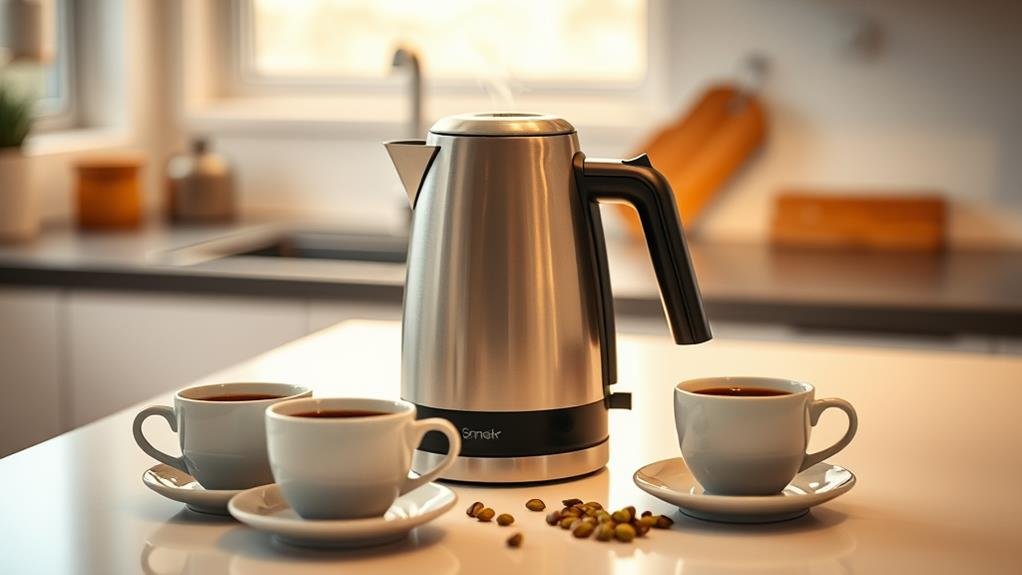
The electric kettle is a game-changer in my kitchen, and I'm excited to share its benefits with you. I've found that it's more energy-efficient than traditional stove-top kettles, which means I save time and electricity when brewing my morning coffee. One of the standout features of my electric kettle is its automatic shut-off, which provides an added layer of safety. I don't have to worry about it overheating or causing accidents, giving me peace of mind as I go about my day.
I also appreciate the speed and convenience of my electric kettle. It boils water faster than traditional kettles, making it ideal for quick coffee or tea preparation. Whether I'm in a rush or just need a mid-morning pick-me-up, my electric kettle is always up to the task. The energy efficiency and safety features make it a practical choice for daily use. Plus, its compact design takes up minimal counter space, keeping my kitchen clutter-free. Overall, I've found that using an electric kettle has streamlined my morning routine and made my life easier. Its benefits have made it an indispensable tool in my kitchen, and I highly recommend giving one a try.
Essential Supplies for Pour Over Coffee
To brew perfect pour-over coffee, I rely on a few key supplies. First, I need a gooseneck kettle that allows me to pour water with precision. This type of kettle gives me control over the water flow and temperature, which is vital for achieving a consistent and flavorful cup of coffee. Next, I require a coffee cone or pour-over cup to hold the coffee filter. I use filters specifically designed for pour-over methods, as they ensure ideal coffee extraction and flavor.
I also need medium coarse ground coffee, which I obtain by grinding my beans with a reliable coffee grinder. Grinding my own beans allows me to achieve the right consistency, which is necessary for a successful pour-over coffee brewing process. With these supplies, I'm ready to boil water and start brewing. The combination of a gooseneck kettle, coffee cone, and proper coffee grounds enables me to create a balanced and rich cup of pour-over coffee. By investing in these essential supplies, I've taken the first step towards refining my pour-over coffee technique.
Simple Steps for Brewing Coffee
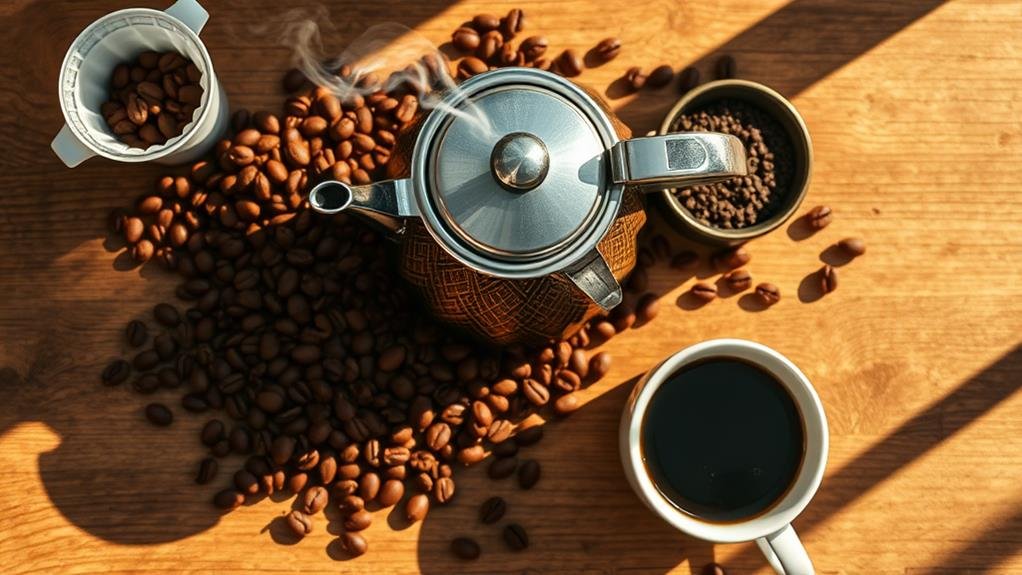
Now that I have my supplies ready, I can focus on brewing the perfect cup of pour-over coffee. The first step is to boil water in my electric kettle. While waiting for the water to boil, I add ground coffee to a filter in my pour-over cone. I make certain to level the grounds evenly to secure a consistent flavor.
Once the water has reached a boil, I slowly pour the hot water over the coffee grounds in a circular motion. This helps to evenly saturate all of the grounds and extract the flavors. I let the coffee steep for a short time before finishing the pour. This allows the flavors to fully develop and the coffee to reach its full potential.
After completing the pour, I let the coffee drip through the filter and into my cup. The result is a fresh and delicious cup of pour-over coffee brewed in a kettle. By following these simple steps, I can enjoy a perfect cup of coffee every time.
Importance of Water Quality Control
Brewing coffee in a kettle requires more than just a casual attention to detail, and controlling water quality is essential to elevating the flavor of my pour-over coffee. I've found that using filtered water is pivotal in ensuring a clean and pure taste in my coffee. Since half of the coffee cup is typically filled with water, it's clear that water quality plays a significant role in the overall taste and experience of my coffee.
| Water Quality Factor | Impact on Coffee | Recommendation |
|---|---|---|
| Mineral content | Affects flavor and aroma | Use filtered water to reduce mineral impurities |
| pH level | Influences extraction and flavor | Use water with a neutral pH level (around 7) |
| Total Dissolved Solids (TDS) | Impacts flavor and mouthfeel | Use water with a moderate TDS level (around 150-200 ppm) |
| Boiling water quality | Affects flavor and aroma | Use fresh, boiling water to prevent stale or over-extracted flavors |
Alternative Coffee Brewing Methods
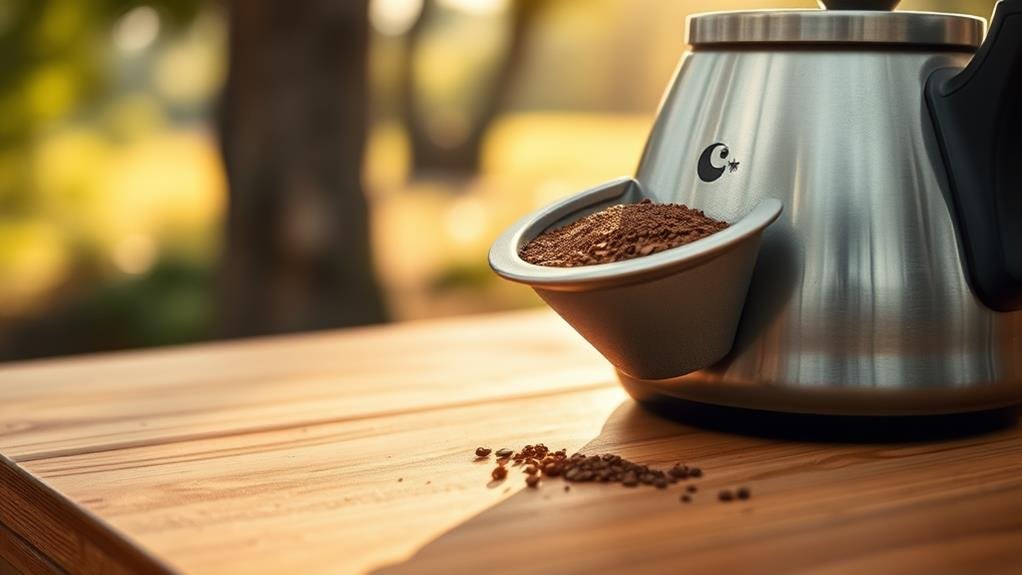
As I refine my pour-over technique, I'm reminded that there's more than one way to brew a great cup of coffee. I've been experimenting with alternative methods, and I'm excited to share my findings with you. One method I've tried is Strainer Coffee, where I boil coffee grounds and water in a pot, then strain the mixture into a mug. It's a quick and easy way to get my coffee fix.
Another method I've tried is the Coffee Pouch method, which involves steeping coffee grounds in a filter with hot water in a mug. It's a convenient alternative to traditional brewing methods. I've also tried Saucepan Coffee, which involves boiling coffee grounds and water in a saucepan before scooping out the brewed coffee. It's a rustic brewing experience that's perfect for camping trips.
These alternative methods offer flexibility in the brewing process and can be a creative way to brew coffee without a traditional coffee pot. By experimenting with different methods, I've found that I can achieve a great cup of coffee without relying on a single technique. Whether I'm using a strainer, pouch, or saucepan, the key to a great cup of coffee is using quality coffee, water, and grounds.
Tips for Perfecting Pour Over Coffee
After refining my pour-over technique, I've come to appreciate the nuances that separate a good cup from an outstanding one. To make excellent pour-over coffee, I start by boiling water to the ideal temperature of 200°F (90°C) in my Bonavita BV3825B electric kettle. The swan neck spout on this kettle allows for precise control over the pouring rate, which is essential for achieving the best flavor extraction.
Next, I pre-soak the paper filter in my ceramic manual dripper to prevent any paper taste from affecting the coffee. Then, I add the appropriate amount of coffee grounds, taking care not to over- or under-extract the coffee. Controlling the pouring rate is fundamental, as it allows me to evenly saturate all the grounds and bring out the full flavor of the coffee. By mastering these steps, I've been able to consistently make exceptional pour-over coffee. I've found that attention to detail, especially when it comes to water temperature and pouring rate, makes all the difference in producing a truly exceptional cup of coffee. By following these tips, you'll be well on your way to perfecting your pour-over technique.
Coffee to Water Ratio Guide
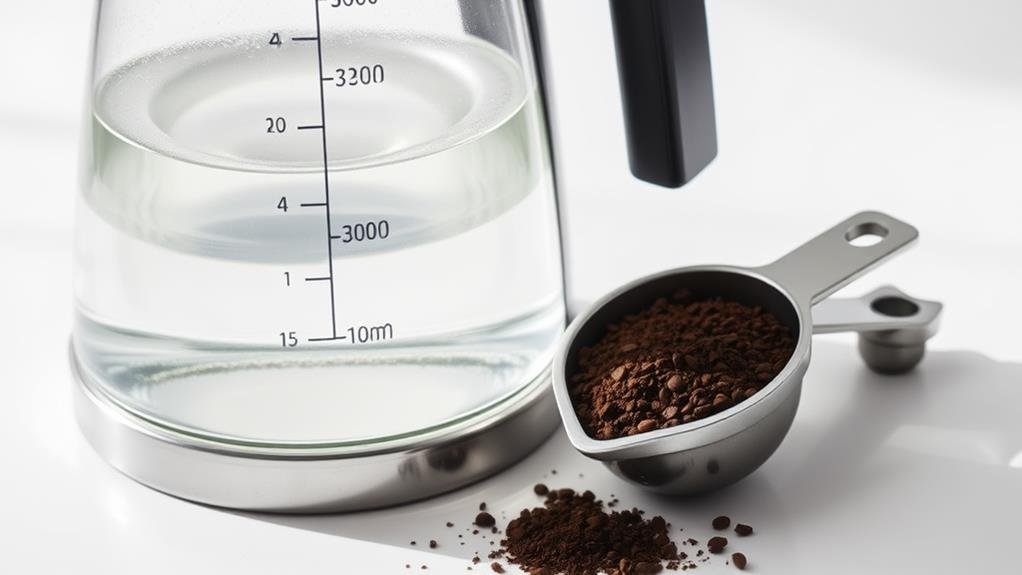
Now that I've refined my pour-over technique, I've shifted my focus to another key aspect of making excellent coffee: the coffee to water proportion. Getting this ratio right is essential to bringing out the best flavor from your coffee beans. I've found that using a scale to measure my coffee and water guarantees consistency and accuracy in my brewing process.
When it comes to the ideal coffee to water proportion, here are three key guidelines to keep in mind:
- The standard ratio: 1:15, meaning 1 part coffee to 15 parts water, is a good starting point for a balanced cup.
- Stronger brew: Adjust the ratio to 1:10 or 1:12 for a richer flavor.
- Experiment and adjust: Try different proportions to find the perfect balance of strength and flavor that suits your taste buds.
When I Make Coffee, I consider the brewing method and adjust the proportion accordingly. For example, a French press requires a coarser grind and a slightly higher proportion, while a pour-over requires a finer grind and a lower proportion. By fine-tuning the coffee to water proportion, I can bring out the unique characteristics of my coffee beans and enjoy a flawless cup every time.
Best Coffee Grinders for Freshness
My coffee-brewing journey has led me to a fundamental realization: freshly ground coffee beans are the gateway to accessing a more flavorful and aromatic cup. I've discovered that investing in a quality coffee grinder is pivotal for achieving the perfect brew. When it comes to choosing a grinder, I recommend opting for a burr grinder. Unlike blade grinders, which can produce uneven grounds, burr grinders guarantee a consistent grind size. This consistency is essential for brewing great coffee, as it allows for even extraction and a balanced flavor.
I've also found that manual coffee grinders offer precision and control over the grind size, making them ideal for various brewing methods. With a manual grinder, I can adjust the grind size to suit my brewing needs, whether I'm making a French press or a pour-over. By grinding my coffee beans just before brewing, I can ensure a fresher and more flavorful cup. Overall, a good coffee grinder is a vital tool for any coffee enthusiast. By choosing the right grinder, I can access a world of flavor and aroma, and elevate my coffee-brewing skills to the next level.
Common Mistakes to Avoid
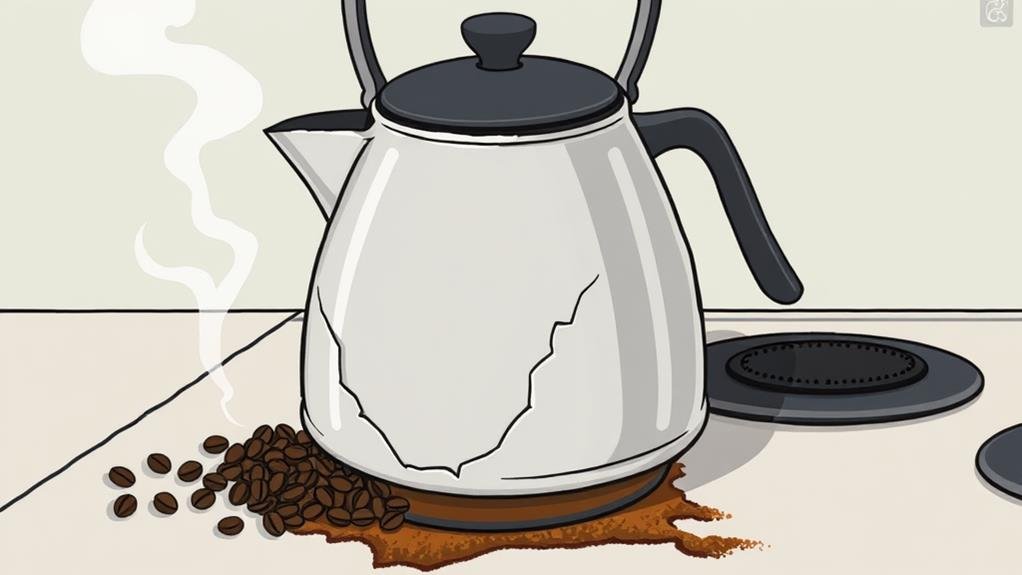
Choosing the right coffee grinder is just the first step in brewing great coffee – mastering the brewing process itself is equally important. I've learned that there are several common mistakes to avoid when making coffee in a kettle. Here are a few key ones:
3 Common Mistakes to Avoid
- Incorrect water temperature: If the water is too hot or too cold, it can affect the flavor and extraction process. I aim for the right temperature, between 195-205°F (90-96°C), to get the best out of my coffee.
- Over-boiling the water: Letting the water boil for too long can lead to over-extraction and a bitter taste in the coffee. I make sure to boil the water just until it's hot, then pour it over the grounds.
- Poor pouring technique: Pouring the water too quickly or too slowly over the coffee grounds can impact the brewing time and flavor. I try to pour the water in a steady, circular motion to evenly saturate all of the grounds in my cup.
Experimenting With Coffee Variations
Countless coffee variations await exploration, and I'm excited to immerse myself and discover new flavors. As I aim for the perfect cup of coffee, I'm experimenting with different roasted coffee beans, from light to dark, to experience varying flavor profiles. I'm also trying out different brewing methods, such as pour-over, French press, and cold brew, to see which one yields the best taste.
To further customize my coffee, I'm playing with grind sizes to find the ideal one for my preferred brewing method. Adding flavored syrups, spices, or alternative milks also opens up a world of possibilities. By adjusting the coffee-to-water ratio, I can fine-tune the strength and intensity of my coffee. I'm pouring water to a saucepan and using a coffee kettle to explore these variations. With each new combination, I'm refining my taste preferences and creating unique coffee creations. Whether I'm in the mood for a rich and bold cup or a smooth and subtle one, I'm confident that I'll find the perfect blend. By experimenting with these variables, I'll uncover the full potential of my coffee and enjoy a more satisfying cup every time.
Conclusion
As I pour the steaming coffee into my cup, the aroma wafts up, a rich reward for the simple process I've just completed. With these basic steps, you can reveal the full flavor potential of your favorite coffee beans. Experiment with ratios, grind sizes, and brewing methods to refine your technique. The art of coffee-making is a journey, and with each cup, you'll inch closer to your perfect blend, savoring the nuances of this beloved beverage.
